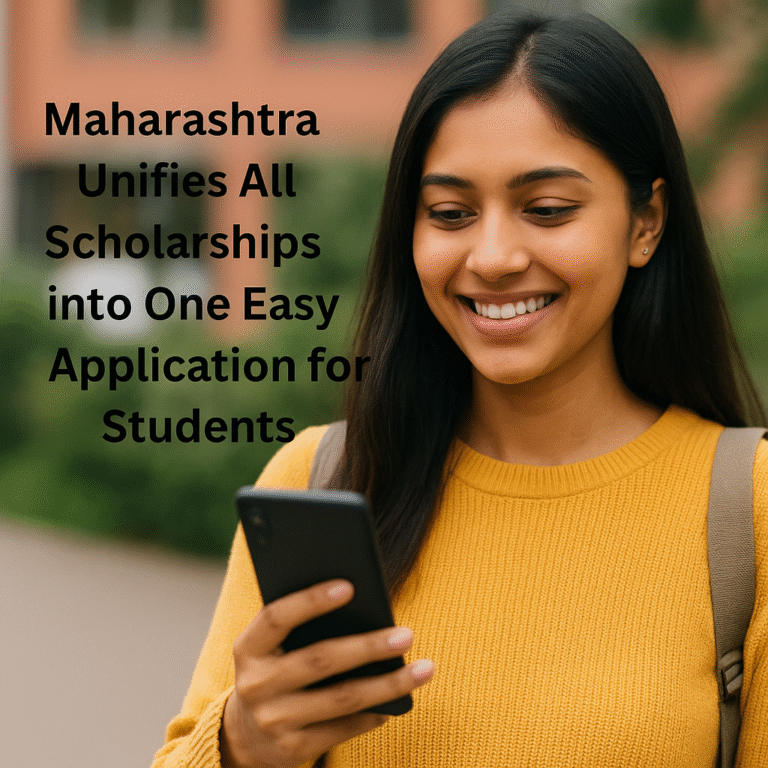In a major shift, the Maharashtra Higher & Technical Education Department is working to eliminate the need for separate scholarship applications by using admission data directly. Students will no longer have to apply separately for government scholarships once the new system goes live in the next academic year.
Why Change Was Needed
Currently, students are admitted and sent multiple sets of documents – income certificates, caste certificates, bank details, etc. Then they apply separately for scholarship schemes on the Maha DBT Portal and wait months for disbursement. According to officials, this duplication causes “weeks-to-months” delay before funds get credited.
How the Automated System Will Work
When operational:
- Documents submitted at the time of college admission will be routed to the Maha DBT portal.
- The system will fill most details automatically, generating the student profile for scholarship eligibility.
- For subsequent years, students will only need to upload prior-year results and attendance records – no fresh full application.
This removes the “apply-again” burden and shortens verification timelines substantially.
What’s At Stake
The state spends about ₹8,000 crore annually on higher-education scholarships, covering nearly 70% of admitted students under various schemes. The reform aims to ensure all eligible candidates receive benefits in time and reduce administrative delays and errors.
With quicker disbursements, students can focus on studies, not financial limbo.
Fresh Angle: Digital Efficiency Meets Social Equity
Beyond convenience, the new process sends a strong message – digital systems can enhance social-welfare reach:
- It reduces the “form-filling fatigue” that discourages students from applying.
It curbs errors or multiple resubmissions that often block low-income students. - It signals trust in existing admission data and streamlines taxpayer-funded support.
- It aligns with broader digital-governance trends where one verified data entry powers multiple entitlements.
What Students Should Know Now
When new admissions open, check whether your college has flagged you for automatic scholarship registration.
Even though you won’t fill a separate application, ensure your bank account, Aadhaar/UID, caste/income certificates are accurate at admission time.
Keep your sheet marks and attendance record ready for post-first-year renewal.
Track scholarship status on the Maha DBT portal regularly – any missing data may delay the benefit.
Challenges & Considerations
- Data integration will only succeed if admission records are accurate and complete – any missing documents at admission can block the downstream scholarship process.
- Smaller colleges or those with less digital infrastructure may struggle to link systems quickly.
- Students changing colleges or transferring mid-course may face complications unless the system accounts for mobility.
- While the new system speeds up access, it does not replace eligibility criteria – income, caste, course-type etc., remain relevant.
Conclusion
Maharashtra’s move to source scholarship data straight from college admission records marks a thoughtful leap into efficient, student-friendly governance. By reducing paperwork and compressing delay, the state stands to deepen the reach of scholarships, strengthen inclusion, and sharpen its higher-education support architecture. For students, this means less form-filling and more focus on academics – and for the system, a smarter way to deploy resources.

